Debunking 5 myths about cash transfers
Many people (including us) grew up hearing that “you can’t just give money to poor people.” This misconception isn’t based on evidence, but rather anecdotes and harmful stereotypes.
Here are 5 common myths that have been debunked through the 300+ studies on the impact of giving directly.
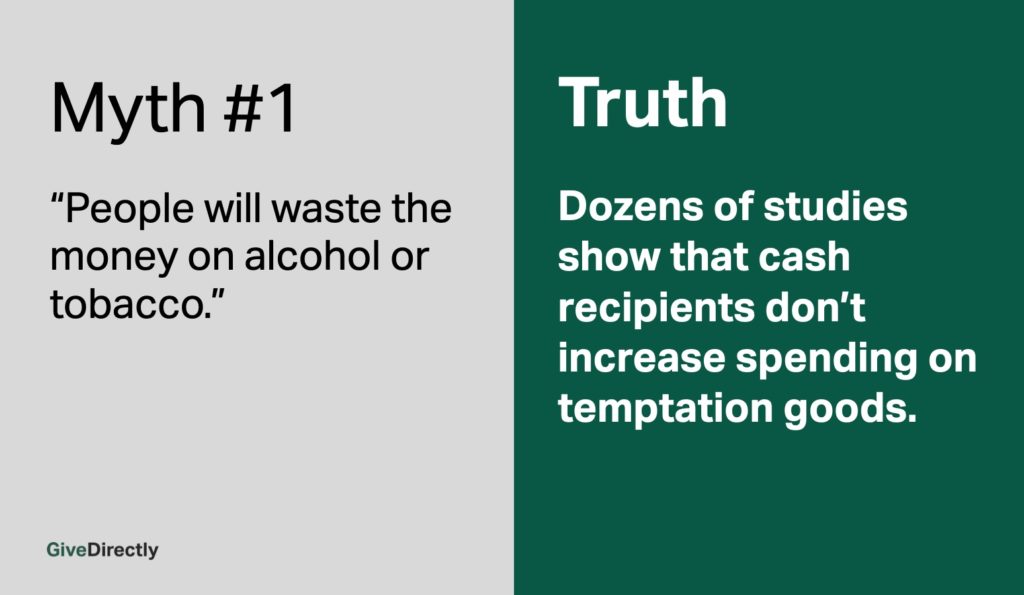
30 studies across Latin America, Africa, and Asia1 found people spent less on temptation goods like alcohol, tobacco, drugs, and gambling after receiving transfers — this is on top of the many other positive outcomes, including reduction in domestic violence,2 improved mental health,3 and increases in school enrollment.4
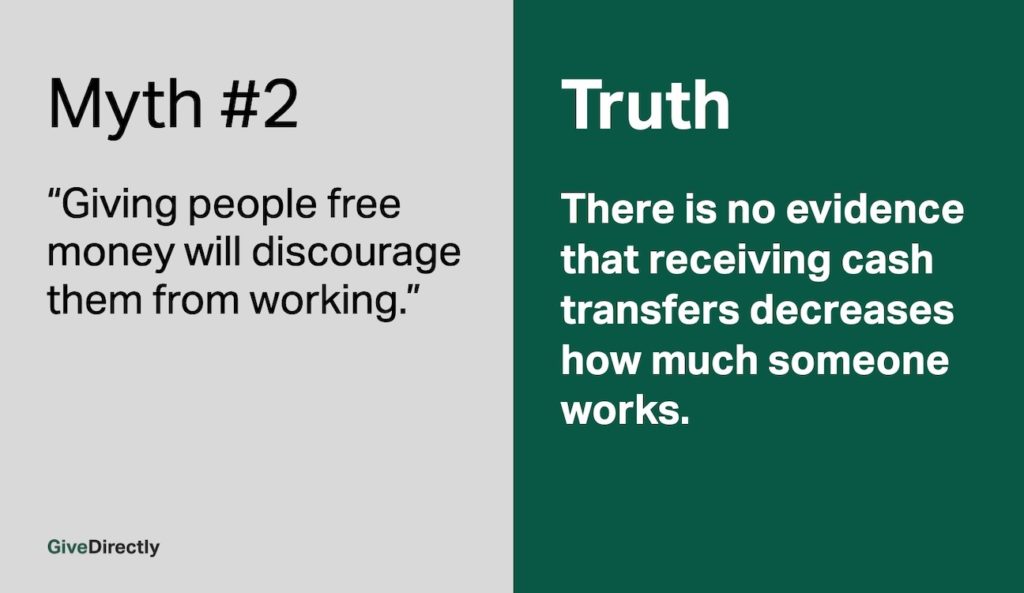
An analysis of 7 randomized controlled trials of cash transfer programs found no systematic evidence that these programs discourage work.5 The only exceptions were reductions in child labor and elderly workers — a favorable outcome.6 A recent study of our Kenya program found recipients shifting from wage labor to self-employment.
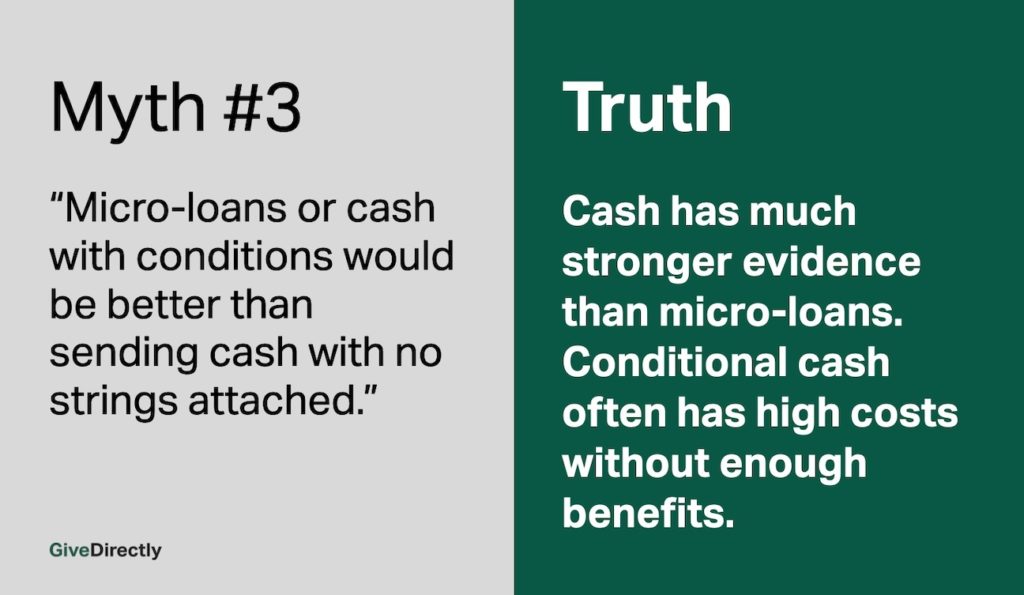
Despite microfinance’s popularity, 4 major reviews found that evidence of microloans’ impact is scarce and inconclusive.7 Many people in poverty also need to spend on investments that will not generate immediate income to pay back a loan, like education, medical treatment, and sanitation.
Others support giving cash with conditions to incentivize certain “positive” behaviors. This requires costly monitoring, and there’s little research to suggest that the benefits outweigh the added costs. One conditional program estimated admin costs as high as 63% of all transfers made in the first 3 years8 — those funds could instead be used to reach more people. Unconditionality also preserves recipient dignity, empowering people to make their own decisions rather than pressuring them to make ones “experts” prefer.
But don’t take it from us; take it from John Cena→
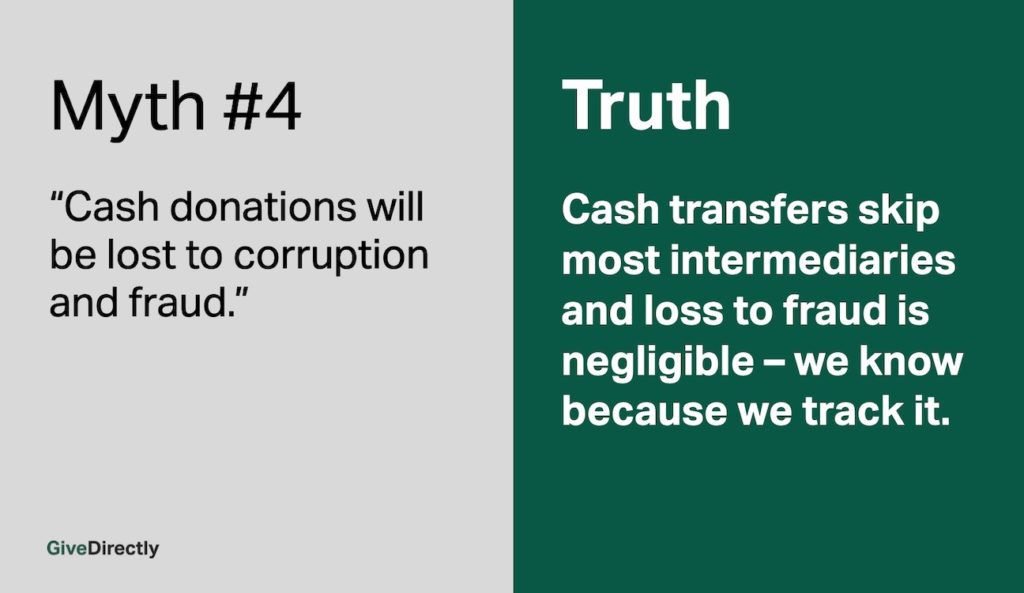
By eliminating intermediaries between donors and people living in poverty, direct giving reduces the opportunity for fraud. Your donation isn’t passed through governments or contractors; it goes straight to a mobile money account controlled by a person in poverty.
But like with any nonprofit, there is still some risk of fraud, which GiveDirectly has a robust process for detecting, investigating, and resolving.
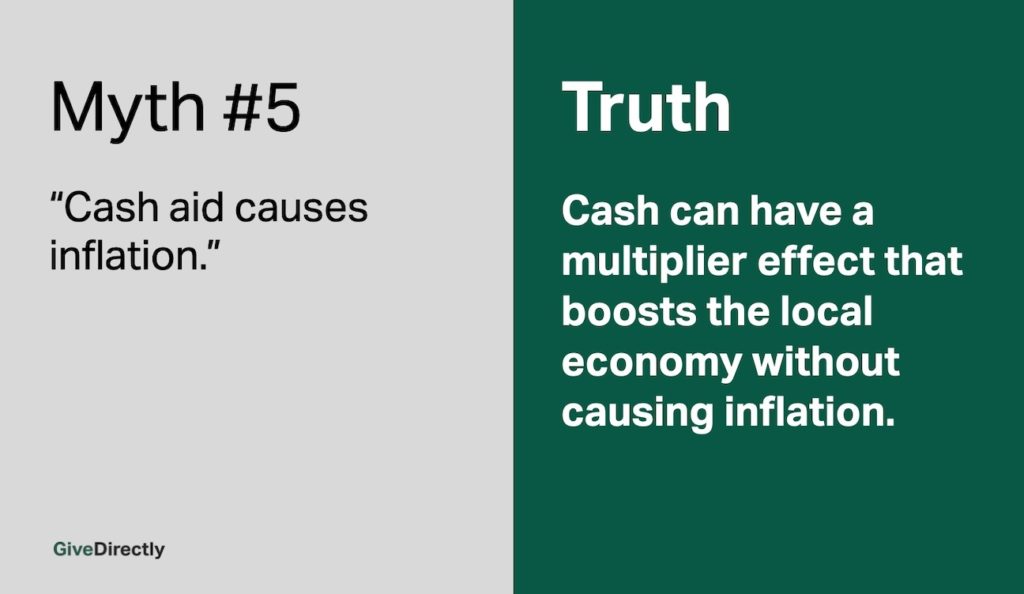
Starting in 2014, independent researchers studied how GiveDirectly transfers affect the local economy: 10,500 poor households across 653 randomized villages in rural Kenya received ~$1,000. After 2.5 years of monthly surveys of businesses and households, researchers found that the cash transfers had a “multiplier” effect of 2.5x, meaning that every $1 of cash delivered generated $2.50 in additional spending or income for the surrounding economy. There was nearly no inflation in prices for goods and services.9
Want to multiply your impact? Share this post with a skeptic in your life.
If you’d like to learn more about direct giving, check out our blog for our most recent research.